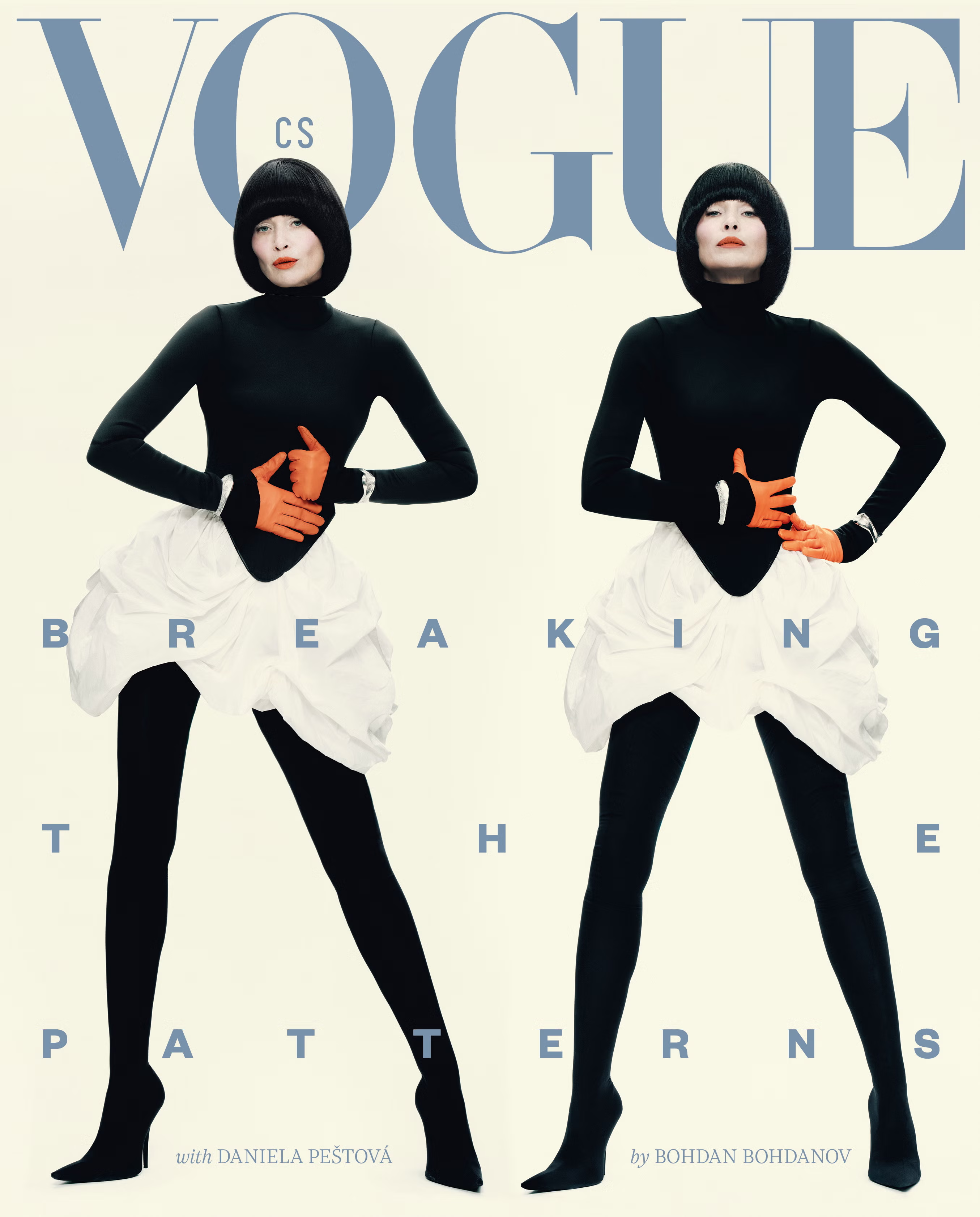Vogue CS in English
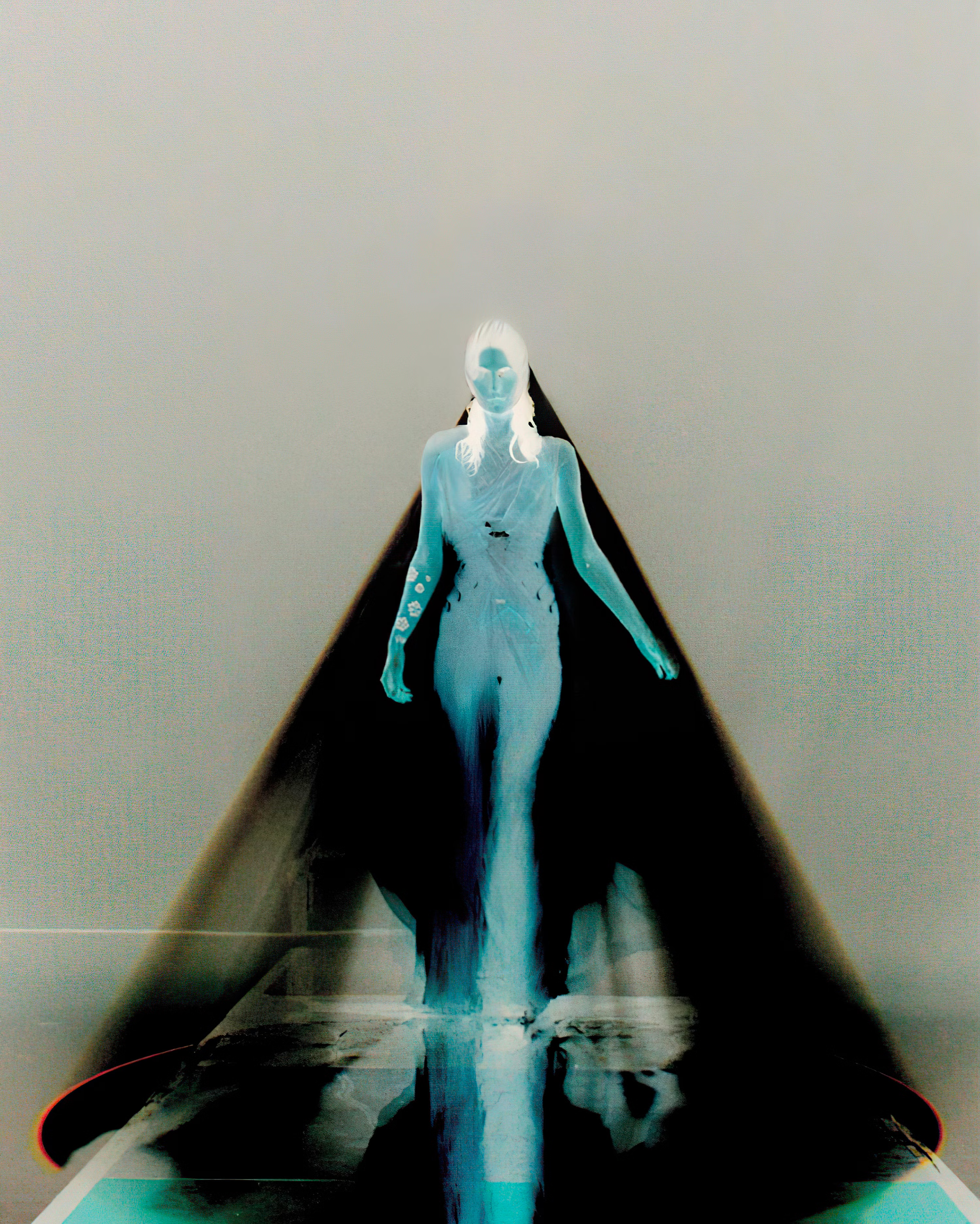
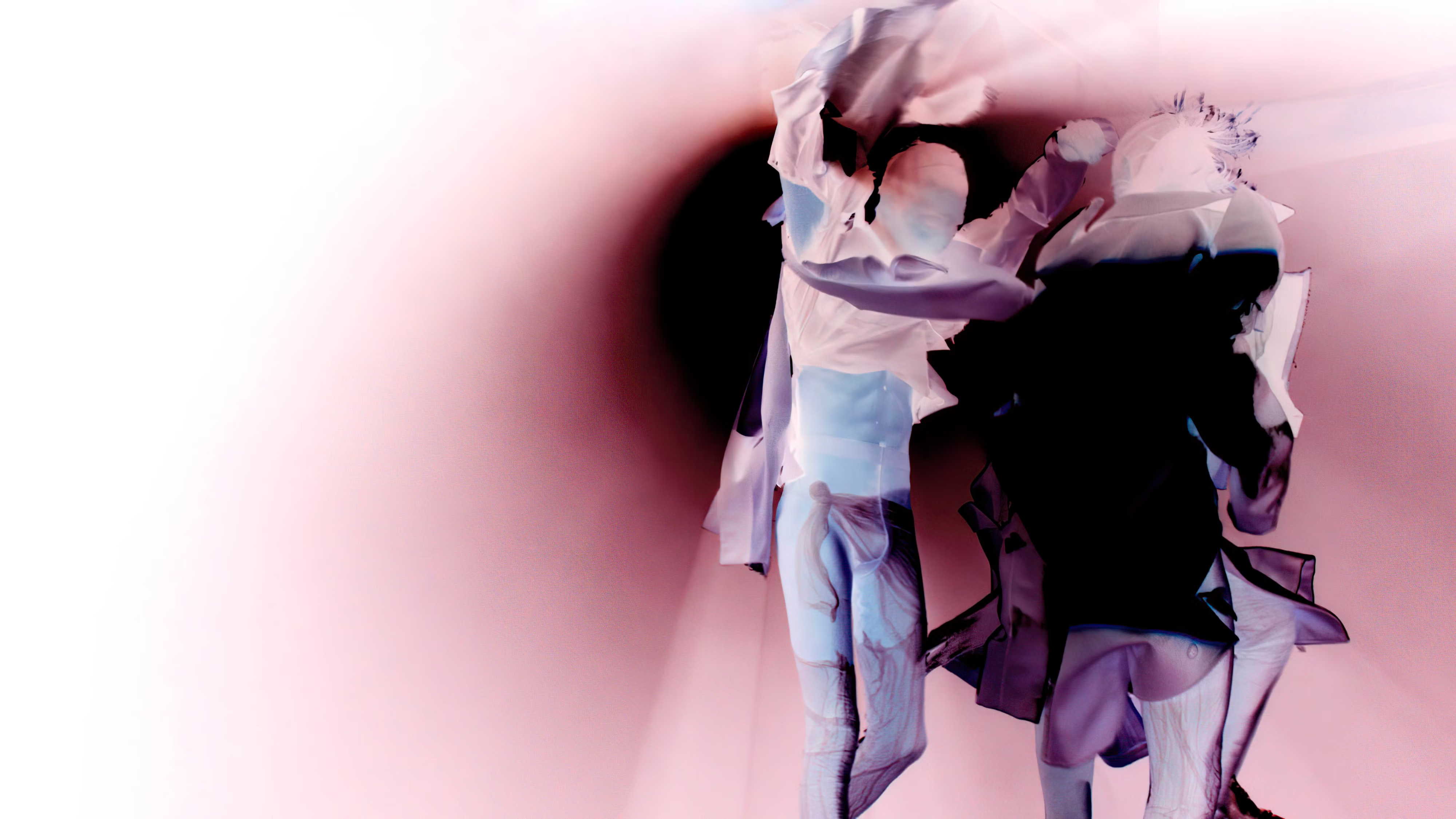
John Galliano turns moviemaker for his latest Maison Margiela Artisanal collection
Sarah Mower17. 7. 2020
“Nothing’s going to stand in the way of the creative process”: For the house’s AW20 haute couture offering, the creative director asked good friend and collaborator Nick Knight to create an immersive short film that veers between thriller and confessional.

Foto: Courtesy of Maison Margiela
“You’re going to come into my head without security! Mon dieu. Take care — it can be a dangerous place!”
John Galliano is laughing, half-joking, half-not, on a Zoom call about the huge leap he’s taken into moviemaking. If you can call it a ‘movie’ — but the term doesn’t hold when the piece of work he’s produced for Maison Margiela is a documentary, a narrative, an interactive provocation and a real, raw, fantastical thing, all at the same time.
Residents of the Paris quartier, which houses Maison Margiela, would recently have been astonished to see a drone circling the local St Joseph’s church, and then disappearing into the open window of the building opposite. It was there to hover over Galliano and his white-coated team at work in the studio — just one fraction of the epic collage of recordings of the Artisanal collection, released today.
Whatever damage the pandemic has wreaked on the fashion industry, the upsurge in mould-breaking imagination in depicting clothes, thought, conversations and humanity is swiftly bringing about a revolution. “I very quickly realised that fashion, and the way we had created and presented it, would never be the same again,” Galliano says. “It can’t be until some kind of vaccine is found. And as soon as I accepted this reality, I was able to embrace the idea that something new could happen, that we could innovate, be resourceful, and that fired me up again. Nothing’s going to stand in the way of the creative process — I refuse to let that happen!”
Foto: Courtesy of Maison Margiela
Psychologically, Galliano essentially flipped the behind-closed-doors mentality that has been his own safety zone — and the anonymity code at Maison Margiela for years. Instead, he decided that he’d show every step of the making of the collection, in extreme detail, only with some extra-special twists in the storytelling. “I thought, ‘I’m going to be completely transparent about this, now.’ I’d always feared being in front of the camera [and] all those things you do when you know the camera’s on you, but I decided that I’m ready. So I approached [British photographer] Nick Knight, whom I trust and love.”
The upshot was two months of documenting every move made by Galliano and his team in just about every possible format. “I wanted to portray the process… a voyeuristic method, almost. So Nick’s been filming me remotely. There’ve been drones flying around us, coming in and out of my conversations. I’ve been wearing GoPros, one on my head, one on my chest.” Knight accumulated Zoom calls, text messages, FaceTime calls, used thermal-camera imaging, AI, and even an X-ray app — everything that could capture the detail and texture of working both by hand and remotely was captured.
“It’s been a whole new, exhilarating process,” Galliano exclaims. Some of the technology has fed back into the collection. “It’s informed how I’ve allocated fabrics for some of the dresses — that’s been a very creative way of working. But of course, some of the sequences are real time, real dresses, because I think today we want to see real, too. I asked my kids to start filming themselves on iPads at the beginning of the pandemic. They were expressing 3D experiments in cutting on their kitchen tables, on their terraces, in their garages. So really that’s how it started.”
Foto: Courtesy of Maison Margiela
This is John Galliano-the-storyteller, though: there had to be something else going on, too. “I wanted to bring in a double narrative,” he muses. “So there’s the story of the collection, but it’s set within a thriller. Why? Because I rather like the genre of horror and thrillers, and how they’re put together. And because for me, it represents the thrill of creation, research, and discovery.”
The second part of the production was shot in the Cotswolds in England, in a mimicking of the start-to-finish timeline of the design-to-fashion shoot. Under British lockdown safety rules, it was an intense bonding experience. “We had to combine as a group on set — live together, dine together, sleep there in the same place. Then — I can’t explain this — magic happened. My muses became vessels for some kind of power, and I don’t know where it was coming from. Here they were, living it: my clan, my tribe, six of them. I wanted them to connect. When you see them in movement and they express 100 per cent what they’re wearing — there were some moments when I had to excuse myself from the set, because of some of the readings there. I found it so moving, I had to actually walk away.”
All those preconceived notions about the lack of feeling in digital representations of fashion? Galliano now dismisses them as old thinking. “The filming is intellectually stimulating and emotionally stimulating. So many people constantly say, ‘How are you going to get the emotion on digital?’ Well, I felt that it was palpable.” What he’s come out with, he says, is “a blueprint” for a way forward which can be used “to activate different dialogues — and show Gen Y and Z exactly how we do things. How we’ve created our own fabrics, whether it’s from the interlinings, created sandwiches of fabric, our own versions of embroidery in-house — how we’ve become resourceful.”
Vogue
Doporučuje
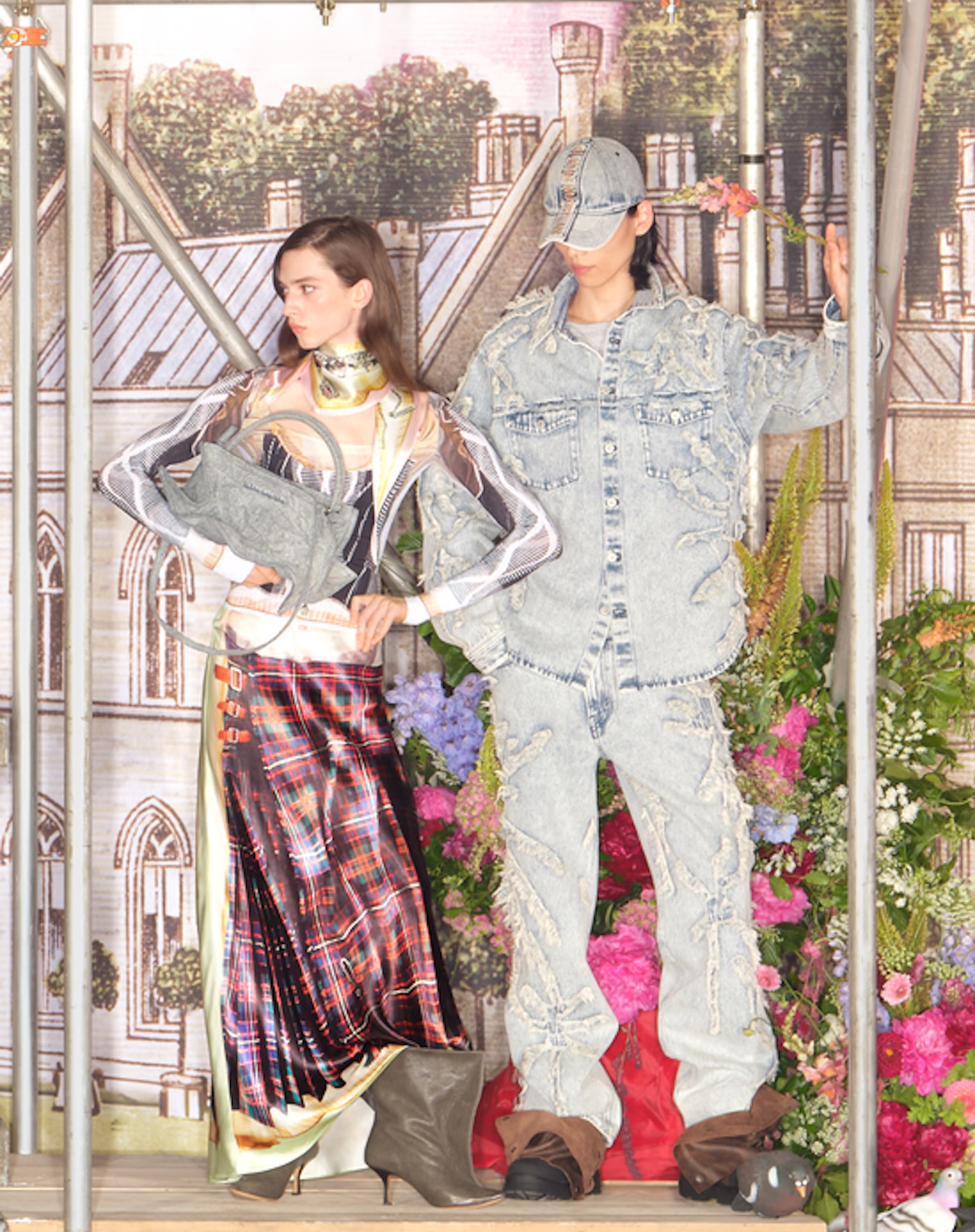
Móda
Glenn Martens v exkluzivní kolekci pro H&M převrací základy šatníku
Jana Patočková24. 10. 2025
Doplňky
Boty tabi od Maison Margiela od nás dostávají palec nahoru… doslova
Anežka Lišková15. 9. 2025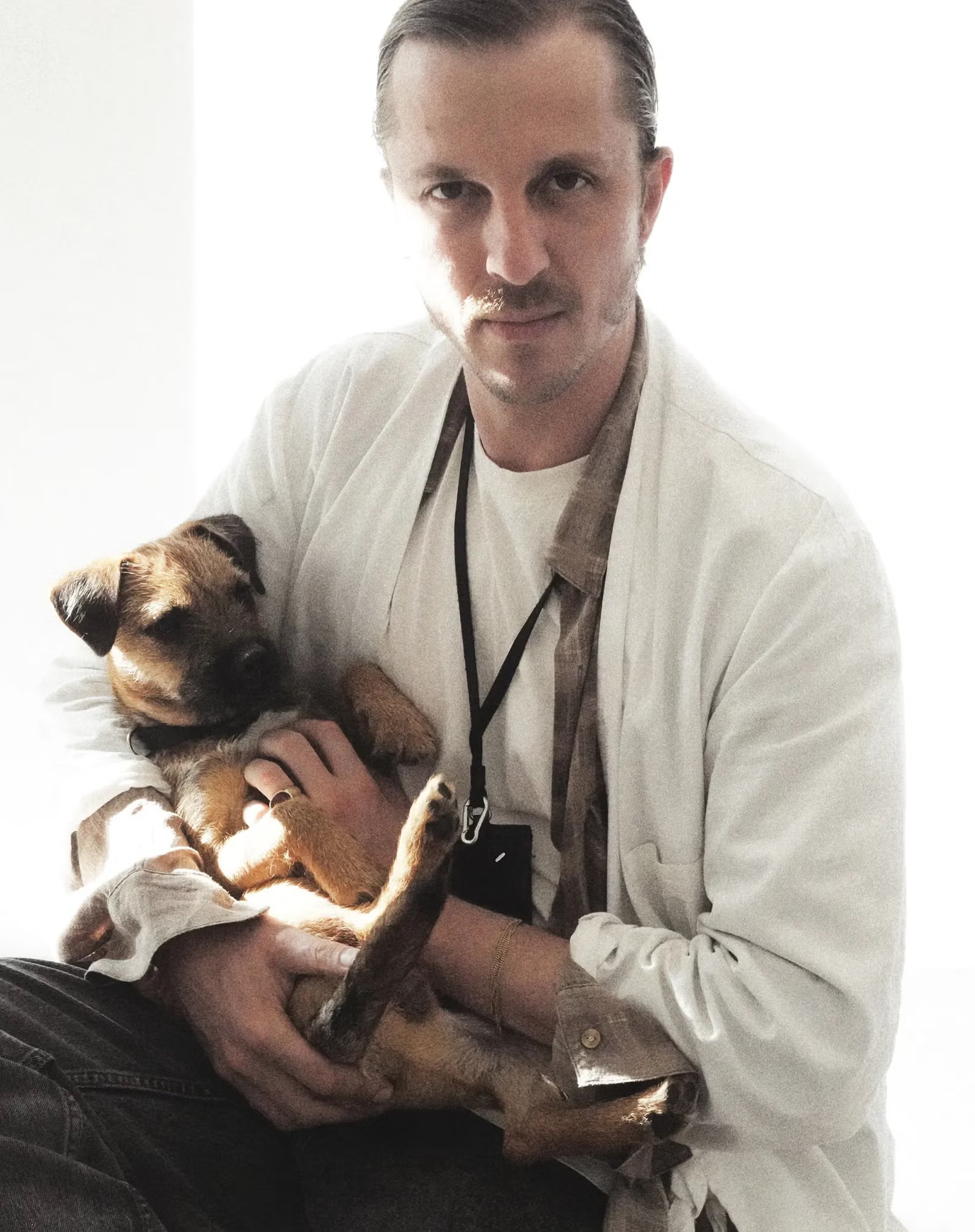
Přehlídky
